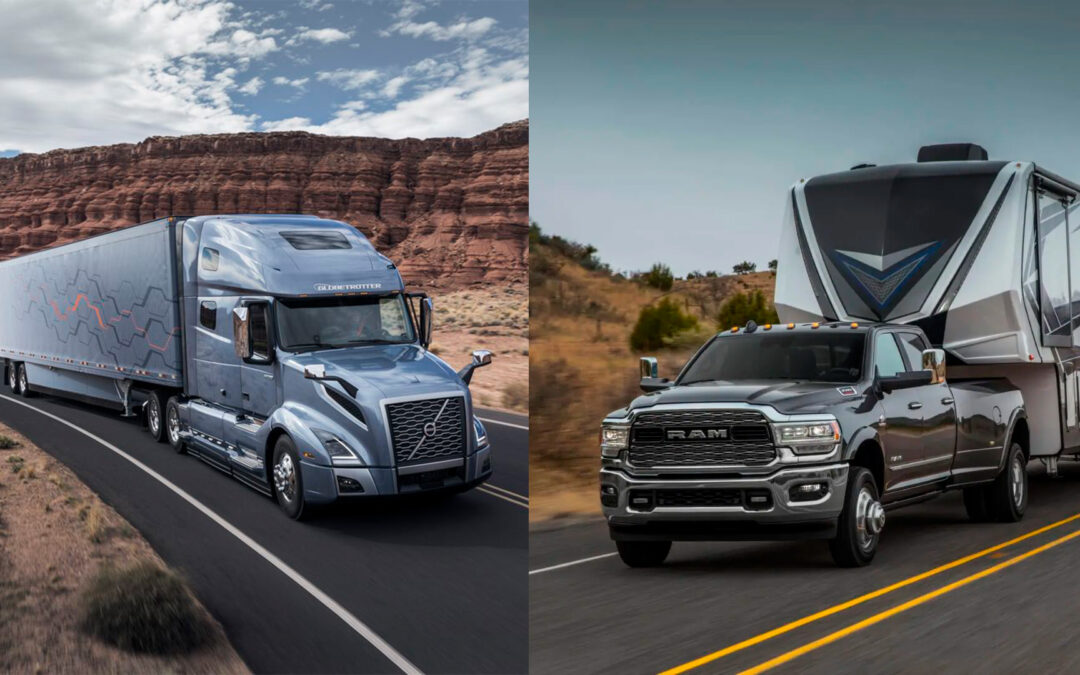The Difference of RV Trucking and Semi-Trucking
Hauling different items from one location to the next is a job that many people do each day. However, there are differences in the way that these individuals haul their cargo and daily loads, depending on the type of vehicle they have and what they feel comfortable operating.
Two of the common types of vehicles used for hauling purposes include RV trucks and semi-trucks, both of which are larger than the average sedan on the road. Before you can understand how these individuals use the vehicles for hauling purposes, it’s important to get a feel for the differences between these two options.
What Is a Semi-Truck?
A semi-truck is also known as a tractor-trailer. It’s one of those large vehicles you’ll see on the expressway carrying huge shipments of items. These trucks are incredibly large and would require you to have a special license to operate the vehicle in order to transport cargo from one place to the next.
Semi-trucks have their advantages. Some of the benefits of using these larger vehicles include:
- More space is available for loading different types of cargo
- Great to use to make a profit by hauling items for different companies
- You can own one independently and legally drive it with the right license for it
- It saves money while making it possible for companies and distributors to get items from one state to the next
So, you can essentially invest in a semi-truck and legally drive it with your CDL. Many people who operate semi-trucks work as freelancers. They like the independence of working with who they want to work with while exploring new areas and delivering cargo from one place to the next. In addition, they have the option of choosing how often they’d like to work, which is great for those who’d like to make a profit while enjoying flexibility.
What is RV Hauling?
An RV is different from a semi-truck because it’s much smaller and is commonly used as a recreational vehicle. It’s not uncommon to see people driving these vehicles when they’re going on camping adventures and on other excursions.
You wouldn’t need to have a CDL to haul RVs as long as the gross vehicle weight ratings of 26,001 pounds or more. RV hauling is when you are using a truck to haul an RV across the country to its new destination.
How to Use Semi-Trucks for Hauling Different Types of Cargo
Using a semi-truck to haul cargo is as simple as it gets. The back of the truck opens and is full of space for boxes, pallets, containers, and other items that you need to take with you from one place to the next.
In most cases, if you’re picking up cargo from a specific spot, the people working at that place will help load it on the vehicle with your assistance. Once everything gets loaded on the semi-truck storage area, you can make sure it’s locked and ready to go before getting behind the wheel and heading toward the destination to deliver the goods. It’s such a simple process!
How to Get Into RV Trucking
Semi-trucks and RV trucking are two totally different things. When it comes to RV trucking, you are going to be taking an RV to a final destination. You will need a three quarter ton truck to get into this type of work.
You can work independently as an RV trucker or you can apply to work with a company like Wave Express.
Which Option Is Best to Use?
The best option to use depends on the person behind the wheel. For those with CDLs that feel comfortable operating a larger vehicle, the semi-truck is often more convenient because it offers more space and makes traveling a simple and straightforward process.
However, for those without a CDL who don’t necessarily feel comfortable operating such a large vehicle, RV trucking is an excellent alternative option worth considering.
Both forms of trucking come in handy and allow different companies of all sizes to get their goods transported from the original location to different places across the country within a reasonable timeframe.
Interested in learning more about Wave Express? Contact us today!


Recent Comments